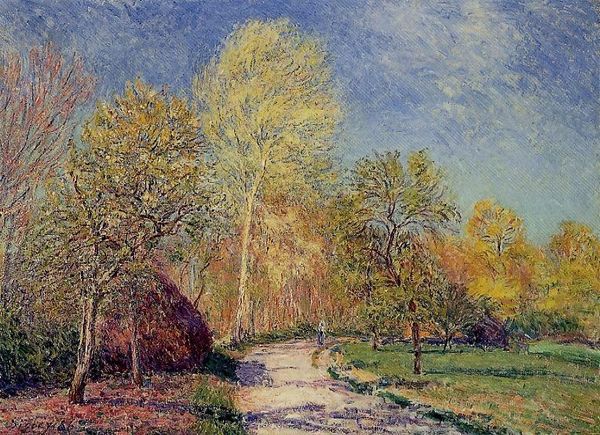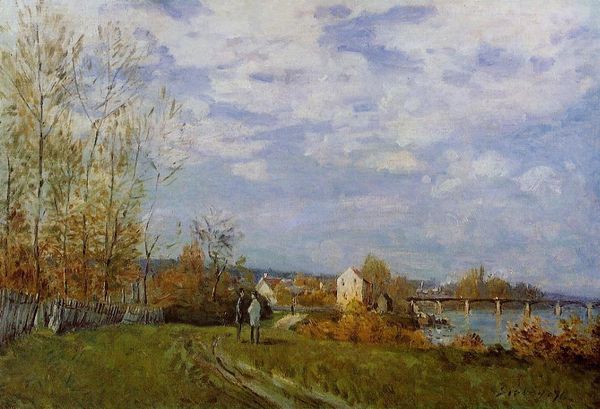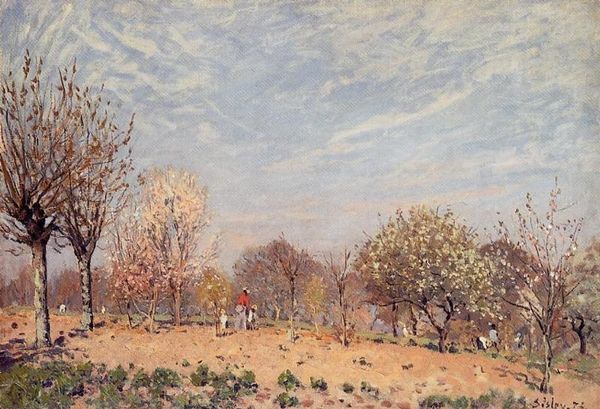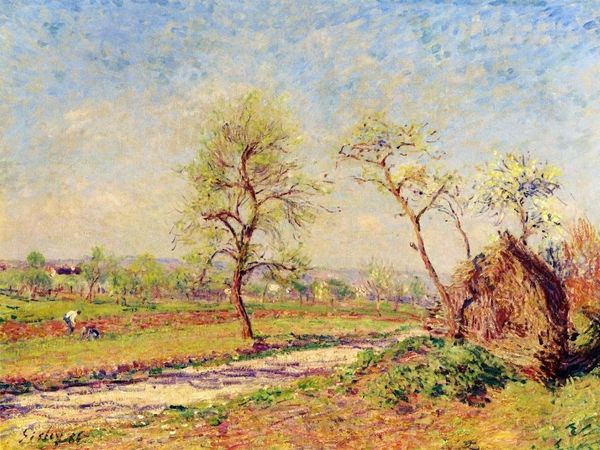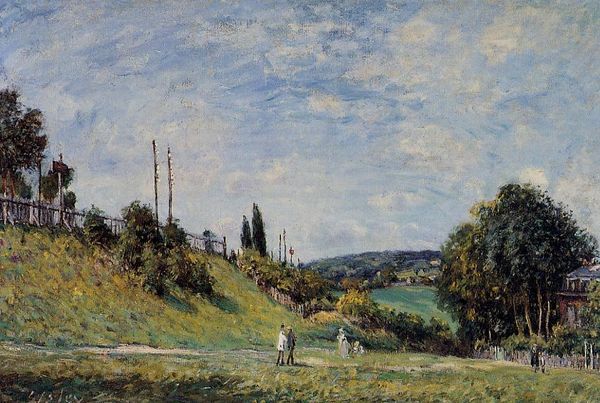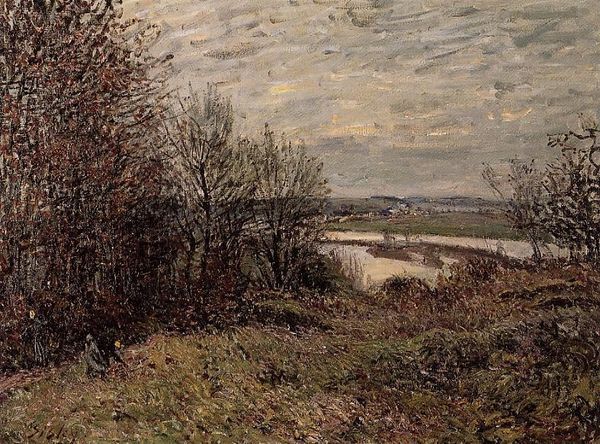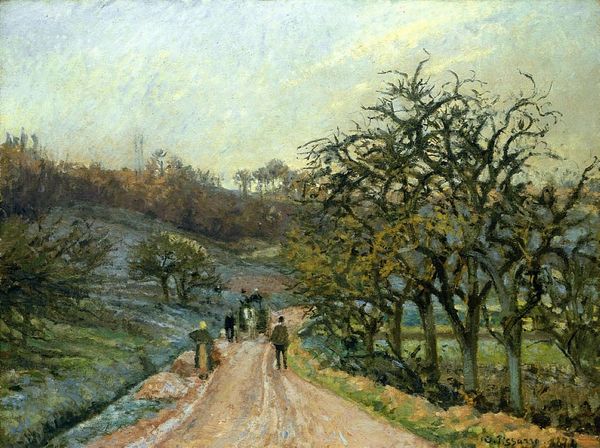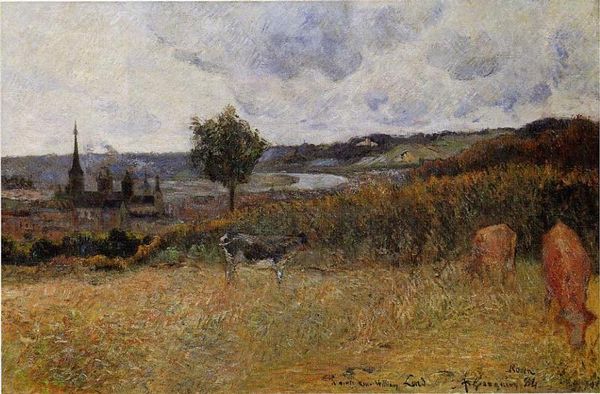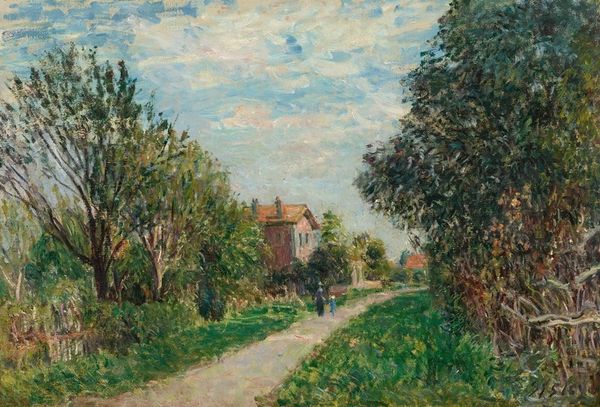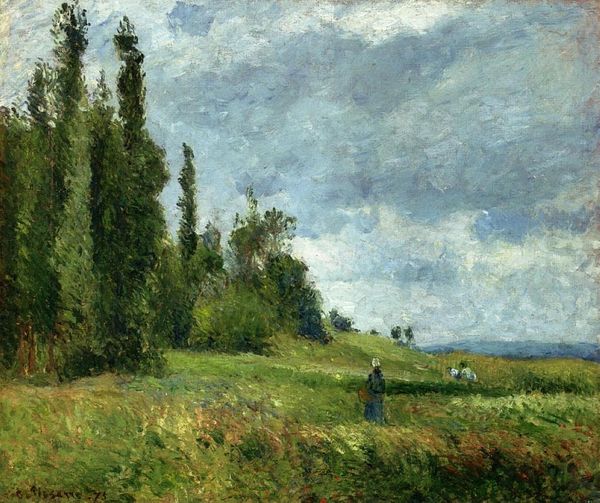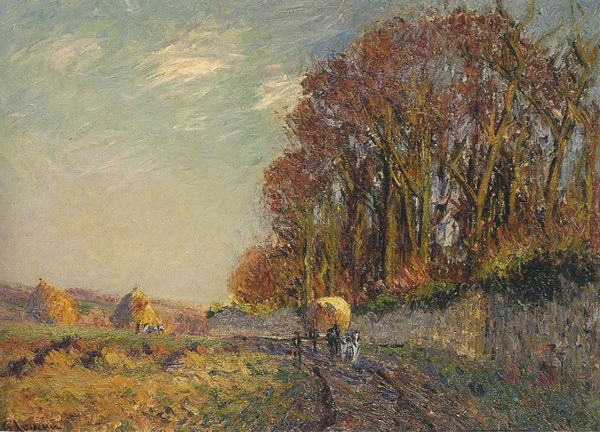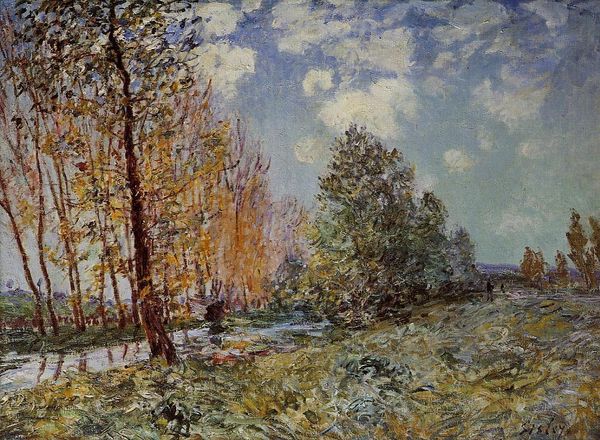
Dimensions: 57.5 x 92 cm
Copyright: Public domain
Editor: Here we have Camille Pissarro’s “La Sente du Chou, near Pontoise," painted in 1878 using oil. I'm struck by the way the composition almost seems to divide between rural calm on the right and, on the horizon to the left, something industrial is lurking, suggesting at what cost. What do you make of this contrasting visual story? Curator: That's a really perceptive observation. Consider Pontoise's location: on the cusp of industrialization and the pull of Paris. What we’re seeing here isn’t simply a landscape, but Pissarro negotiating anxieties around modernity and urbanization. He shows us smoke stacks juxtaposed against verdant fields, which invites questions about progress, about labor, about the very definition of “landscape” in this era. It’s important to also look at who had access to these landscapes, right? Who could afford to dwell on aesthetic beauty versus who was tied to that land by necessity? Editor: That makes me think about whose stories usually get told and how they’re valued. How does his impressionistic style figure into all of this? Curator: The fleeting, broken brushstrokes often associated with Impressionism allowed artists to capture immediate sensory experiences. But in this context, it’s doing more than just showing us a pretty picture. Pissarro's deliberate lack of detail for the laborers humanizes these people with an element of privacy and dignity by making them unreadable as working class archetypes. The art is a quiet observation without further reducing them as the labor which they perform. It is worth asking then, who decides what deserves memorialization and for whom? Editor: That’s really thought-provoking; seeing how social and economic context intertwine so visibly here enriches the viewing experience so much. Thanks! Curator: Absolutely. And for me, understanding Pissarro’s radical politics makes his landscape choices much more impactful than if it were *just* about aesthetics. It's always important to consider how the institutions that promote the works reinforce certain political ideals of who and what deserves representation.
Comments
No comments
Be the first to comment and join the conversation on the ultimate creative platform.
